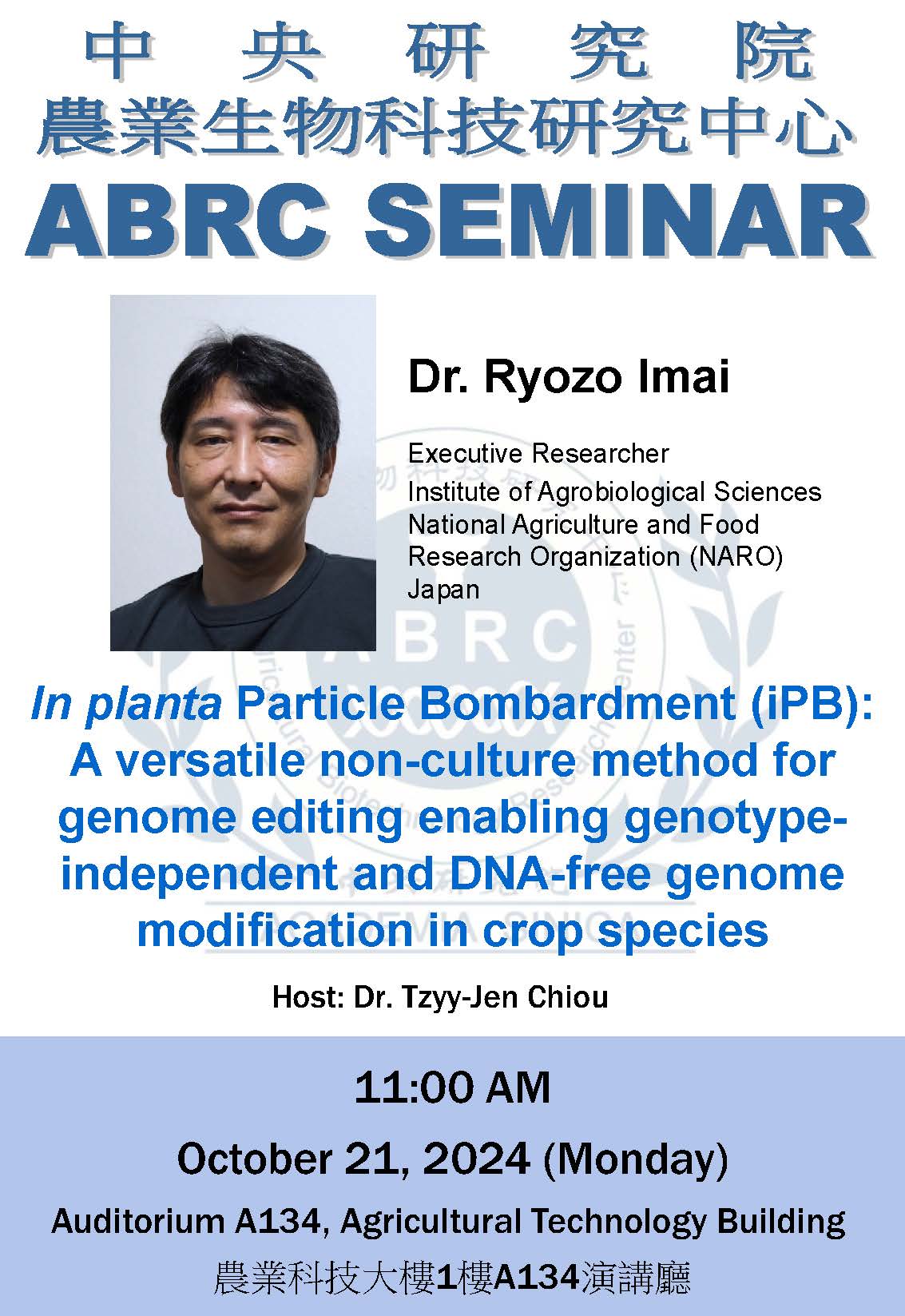- Lectures
- Agricultural Biotechnology Research Center
- Location
Auditorium A134, Agricultural Technology Building
- Speaker Name
Dr. Ryozo Imai (Executive Researcher, Institute of Agrobiological Sciences, National Agriculture and Food Research Organization (NARO), Japan)
- State
Definitive
- Url
Genome editing has emerged as a promising tool for crop breeding, but its application in elite crop varieties has been limited. Conventional culture-based genome editing methods face challenges in these varieties, necessitating the exploration of genotype-independent editing techniques. Here, we present a novel approach, in planta Particle Bombardment (iPB), for delivering CRISPR/Cas9 ribonucleoproteins into the shoot apical meristems (SAMs). The SAM, with its potential to develop into reproductive tissues, offers a unique opportunity for heritable genome editing events. We employed the iPB method to introduce a semidwarf1 (sd1)-orthologous mutation into wheat, targeting a gene responsible for stem elongation analogous to the rice 'Green Revolution' gene, SD1. By generating a triple sd1 knockout mutant in hexaploid wheat, we achieved a 10% reduction in culm length without compromising yield. As most current wheat varieties carry the Rht1 mutation, which results in shortened culms due to a gain-of-function mutation in the DELLA/GAI gene, the combination of the two GA traits proved valuable for agronomic improvement. We applied the iPB method to barley and introduced a late-heading phenotype in Japanese elite varieties, which are typically early heading, to meet the new demand for grass production. We also extended the iPB method to dicot plants such as soybean, buckwheat, and melon. Furthermore, we developed an iPB-based gene targeting system that offers maximum flexibility for genome modifications in wheat. In summary, our study presents the iPB method as a promising technique for genotype-independent DNA-free genome editing in crops. The successful application of this approach in diverse crop species demonstrates its versatility and potential impact on crop improvement.
References:
Kumagai et al. (2022) Plant Physiol 188, 1838–1842; Luo et al. (2023) Plant Biotechnol J. 21, 668-670; Tezuka et al. (2024) Plant Physiol. 195, 287-290; Ukaji et al. (2024) Plant Physiol in press.









 Home
Home

